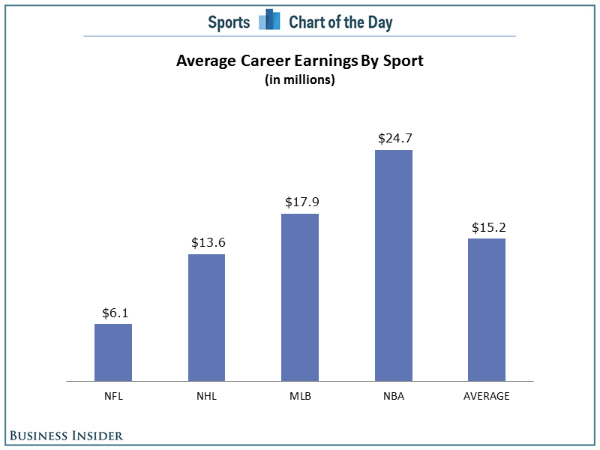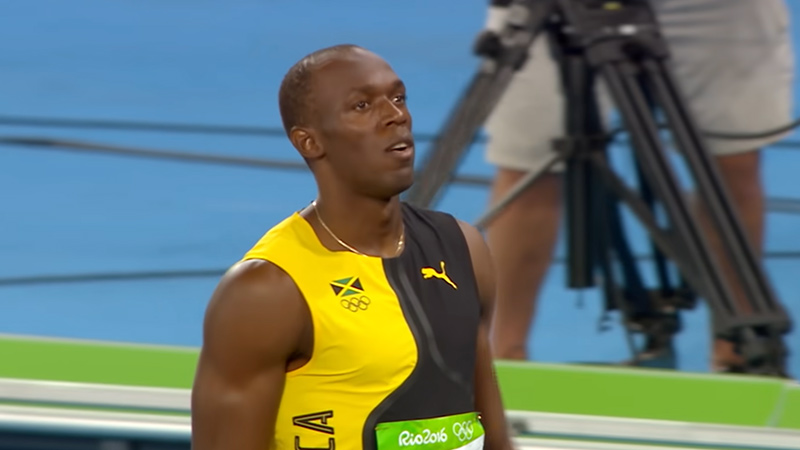An Overview of Professional Track Athletes’ Income Streams
Professional track athletes primarily earn their living through a combination of prize money, sponsorships, and endorsements. These sources of income can vary significantly depending on the athlete’s performance, popularity, and the discipline they specialize in. Understanding the various income streams available to professional track athletes can provide valuable insights into the financial landscape of the sport and help aspiring athletes plan their careers accordingly.
Prize money is a direct reward for an athlete’s performance in competitions. In track and field events, prize money structures can differ significantly between various events and levels of competition. For instance, major international events such as the Olympics, World Championships, and Diamond League meetings typically offer substantial prize money to athletes who finish at the top of their events. However, the financial rewards for participating in smaller, domestic competitions are usually much more modest.
Sponsorships and endorsements play a crucial role in the financial success of professional track athletes. These agreements provide athletes with additional income and product support, often in exchange for promoting a brand or product through social media, public appearances, or other marketing channels. The ability to secure lucrative sponsorships and endorsements often depends on an athlete’s performance, popularity, and marketability. Maintaining a positive public image and consistently delivering strong performances can significantly increase an athlete’s earning potential in this regard.
A Closer Look at Prize Money in Track and Field Events
Prize money is a significant source of income for professional track athletes, particularly in major international events. In the Olympics, for example, gold medalists in individual events earn approximately $37,500, while silver and bronze medalists receive $22,500 and $15,000, respectively. In addition to individual event medals, athletes can also earn prize money by setting Olympic records or participating in the relay events.
At the World Championships, the prize money structure is similar, with gold medalists earning around $60,000, silver medalists receiving $30,000, and bronze medalists taking home $20,000. Diamond League meetings, a series of 14 premier track and field events, offer prize money to the top eight finishers in each event, with the winner earning up to $10,000.
It is important to note that prize money structures can vary significantly between different events and competitions. For instance, field events such as the high jump, long jump, and javelin throw typically offer lower prize money compared to popular running events like the 100m, 200m, and 400m. This discrepancy can lead to differences in earning potential among athletes from various track and field disciplines.
Moreover, the impact of prize money on athletes’ earnings can be substantial, especially for those who consistently perform well in major international events. However, prize money alone may not be sufficient to cover the costs associated with training, traveling, and maintaining a professional athletic career. Therefore, athletes often rely on additional income sources, such as sponsorships and endorsements, to supplement their earnings and ensure financial stability.
The Role of Sponsorships and Endorsements in Athletes’ Finances
Sponsorships and endorsements are essential components of a professional track athlete’s financial portfolio. These agreements provide athletes with additional income, product support, and exposure, often in exchange for promoting a brand or product through various marketing channels. The ability to secure lucrative sponsorships and endorsements depends on several factors, including an athlete’s performance, popularity, marketability, and public image.
High-performing athletes with a strong track record of success are more likely to attract the attention of major brands and secure lucrative sponsorship and endorsement deals. Consistent success in major international events, such as the Olympics, World Championships, and Diamond League meetings, can significantly boost an athlete’s earning potential in this regard. Moreover, athletes who excel in popular events, such as the 100m, 200m, and 400m, may have an advantage in securing sponsorships and endorsements due to the higher visibility and popularity of these events.
Popularity also plays a crucial role in an athlete’s ability to secure sponsorships and endorsements. Charismatic athletes who connect well with fans and the media are more likely to generate interest from brands and secure lucrative deals. Marketability and media presence are additional factors that can influence an athlete’s earning potential in the sponsorship and endorsement market. Athletes who effectively leverage social media and other platforms to engage with their audience and build their personal brand can significantly increase their earning potential in this regard.
Maintaining a positive public image is vital for athletes seeking to secure and maintain sponsorships and endorsements. Brands are more likely to invest in athletes who present themselves as professional, responsible, and respectful. Athletes should be mindful of their actions both on and off the track, as negative publicity can adversely impact their ability to attract and retain sponsorships and endorsements.
How Athlete Performance and Popularity Affect Earnings
An athlete’s performance and popularity are two critical factors that influence their earnings in professional track and field. Consistent success in major international events can significantly boost an athlete’s earning potential, as high-performing athletes are more likely to attract the attention of major brands and secure lucrative sponsorship and endorsement deals.
A strong track record of success in events such as the Olympics, World Championships, and Diamond League meetings can serve as a powerful selling point for athletes seeking sponsorships and endorsements. Brands are often interested in associating themselves with successful, high-profile athletes, as this can enhance their reputation and increase their market reach. Moreover, athletes who excel in popular events, such as the 100m, 200m, and 400m, may have an advantage in securing sponsorships and endorsements due to the higher visibility and popularity of these events.
Popularity plays a crucial role in an athlete’s ability to secure and maintain sponsorships and endorsements. Charismatic athletes who connect well with fans and the media are more likely to generate interest from brands and secure lucrative deals. Marketability and media presence are additional factors that can influence an athlete’s earning potential in the sponsorship and endorsement market. Athletes who effectively leverage social media and other platforms to engage with their audience and build their personal brand can significantly increase their earning potential in this regard.
Factors such as charisma, marketability, and media presence can significantly impact an athlete’s popularity and, consequently, their earning potential. Athletes who possess these qualities are more likely to capture the public’s attention and generate interest from brands. By consistently delivering strong performances and cultivating a positive public image, athletes can maximize their earning potential and secure their financial future in the sport.
Comparing Earnings Across Track and Field Disciplines
The earning potential of professional track athletes can vary significantly depending on their discipline, as the popularity, demand, and financial rewards associated with each event can differ considerably. While athletes in high-profile events such as the 100m, 200m, and 400m sprints often earn more due to their greater visibility, athletes in other disciplines can still achieve financial success through strategic planning and smart decision-making.
Field events, such as the high jump, long jump, and javelin throw, typically offer lower prize money compared to popular running events. However, athletes in these disciplines can still secure lucrative sponsorships and endorsements by consistently delivering strong performances and cultivating a positive public image. Moreover, athletes in niche events can leverage their unique skills and personal stories to build a strong personal brand and attract opportunities that may not be available to athletes in more popular disciplines.
Middle- and long-distance runners, such as those competing in the 800m, 1500m, and marathon events, may not enjoy the same level of visibility as their sprinting counterparts, but they can still earn a substantial income through strategic planning and smart financial management. By focusing on improving their performance, building a strong personal brand, and leveraging connections and opportunities, athletes in these disciplines can maximize their earning potential and achieve financial success in the sport.
Regardless of their discipline, professional track athletes should be aware of the earning disparities that exist within the sport and take proactive steps to maximize their earning potential. By focusing on performance, popularity, and personal branding, athletes can create opportunities for themselves and secure their financial future in the sport.
Financial Management and Planning for Professional Track Athletes
Effective financial management and planning are crucial for professional track athletes seeking to maximize their earnings and secure their financial future. By adopting smart financial practices, athletes can ensure that they are making the most of their income and setting themselves up for long-term success both on and off the track.
One of the most important aspects of financial management for professional track athletes is saving and budgeting wisely. With a significant portion of their income coming from prize money, sponsorships, and endorsements, athletes must be mindful of their spending habits and prioritize long-term financial stability over short-term gratification. By setting aside a portion of their income for savings, investments, and emergency funds, athletes can protect themselves from financial instability and ensure that they have the resources they need to maintain their lifestyle and achieve their goals.
Investing and budgeting wisely are also essential components of financial management for professional track athletes. By diversifying their investment portfolio and working with a financial advisor, athletes can grow their wealth and secure their financial future. Additionally, by creating a realistic budget and tracking their expenses, athletes can ensure that they are living within their means and making the most of their income.
Long-term financial planning is another critical aspect of financial management for professional track athletes. With the average professional track and field career spanning only a few years, athletes must consider their post-career security and plan accordingly. By investing in education, training, and career development opportunities, athletes can set themselves up for success after their athletic careers come to an end.
In conclusion, effective financial management and planning are essential for professional track athletes seeking to maximize their earnings and secure their financial future. By saving, investing, budgeting, and planning wisely, athletes can ensure that they are making the most of their income and setting themselves up for long-term success both on and off the track.
The Impact of Governing Bodies and Regulations on Athletes’ Earnings
Governing bodies and regulations play a significant role in shaping the financial landscape of professional track and field athletics. From rules related to sponsorships and endorsements to prize money distribution, these regulations can have a profound impact on an athlete’s earnings and financial stability.
One of the most significant ways that governing bodies influence athletes’ earnings is through rules related to sponsorships and endorsements. Many governing bodies have strict regulations regarding the types of brands and products that athletes can endorse, as well as restrictions on the size and placement of logos on athletes’ uniforms and equipment. These regulations can limit an athlete’s ability to secure lucrative sponsorship and endorsement deals, particularly if they are aligned with a brand or product that is not permitted by the governing body.
Prize money distribution is another area where governing bodies can impact athletes’ earnings. In some cases, governing bodies may distribute prize money unequally between events or disciplines, favoring certain events over others. This can lead to disparities in earnings between athletes in different disciplines, with athletes in less popular or less financially rewarding events earning significantly less than their counterparts in more popular or financially lucrative events.
To promote greater financial equality among athletes, governing bodies should consider implementing reforms that address these issues. For example, relaxing restrictions on sponsorships and endorsements could give athletes more freedom to secure lucrative deals and increase their earnings. Additionally, implementing more equitable prize money distribution policies could help to reduce disparities in earnings between athletes in different disciplines.
In conclusion, governing bodies and regulations play a significant role in shaping the financial landscape of professional track and field athletics. By implementing reforms that promote greater financial equality and opportunity for athletes, governing bodies can help to ensure that athletes are able to maximize their earning potential and achieve long-term financial stability.
Maximizing Earnings Potential: Tips for Aspiring Professional Track Athletes
Professional track and field athletes have a variety of income streams available to them, including prize money, sponsorships, and endorsements. However, maximizing earning potential requires a strategic approach that takes into account an athlete’s performance, popularity, and discipline.
To maximize earnings potential, aspiring professional track athletes should focus on improving their performance and achieving consistent success in major competitions. Winning medals and setting records can significantly increase an athlete’s earning potential, as top performances can lead to higher prize money, more lucrative sponsorship and endorsement deals, and greater media exposure.
Building a strong personal brand is also essential for maximizing earning potential. Athletes can increase their visibility and marketability by developing a unique and authentic public persona, engaging with fans on social media, and participating in media interviews and events. By cultivating a positive public image and demonstrating their commitment to the sport, athletes can attract more sponsorship and endorsement opportunities and increase their earning potential.
Leveraging connections and opportunities is another key strategy for maximizing earning potential. Athletes can build relationships with coaches, agents, and other industry professionals to gain access to resources, training opportunities, and sponsorship and endorsement deals. Additionally, athletes should be open to exploring new and innovative income streams, such as appearing in commercials, creating their own product lines, or participating in speaking engagements and events.
In conclusion, maximizing earning potential as a professional track athlete requires a strategic approach that takes into account an athlete’s performance, popularity, and discipline. By focusing on improving performance, building a strong personal brand, and leveraging connections and opportunities, aspiring professional track athletes can increase their earning potential and achieve long-term financial success in the sport.






